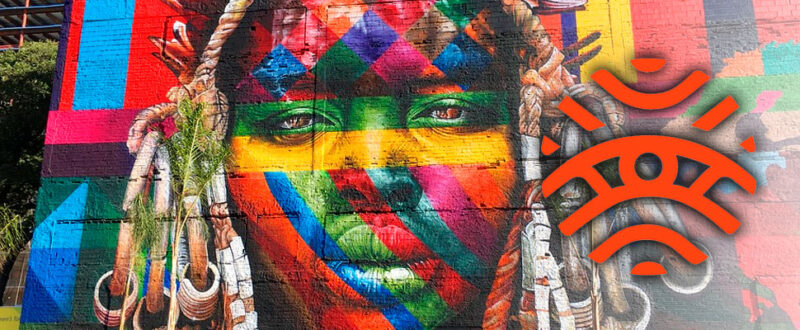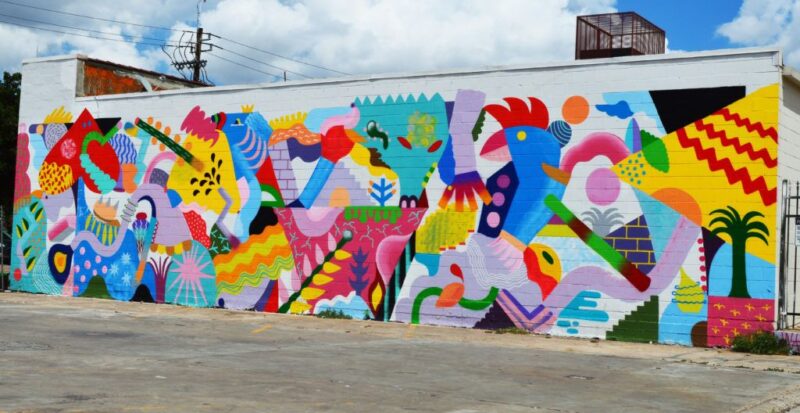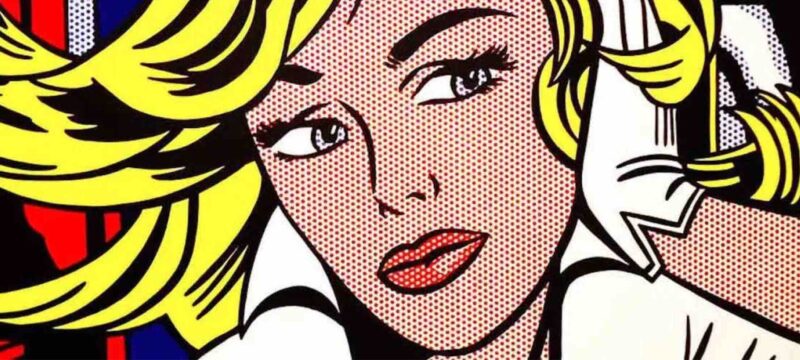The most famous and influential artistic current of the twentieth century, called pop art, emerged as a phenomenon of representation of consumerism, the mass media and the so-called “popular culture” (from which it also takes its name). In the early fifties, it’s possible to find his first testimonies, in Europe, while the great leap, in quality and in public, took place only in the following decade, in the American society that, more than any other, has been able to recognize itself by fully interpreting its spirit and perhaps even little excess.

Important and decisive for the protagonists of pop art was the break with the theory and methods used in the expressionism and abstractionism, the two main movements that preceded it, temporally, as they could no longer guarantee the image as an expression and popular testimony that, at that moment, wanted to narrate its cultural redemption of life understood as a technological and logical achievement of entertainment. Instead, drawing from everyday objects and mass media such as newspapers, comics and magazines, pop art developed highly vibrant productions, making this movement the cornerstone on which most of the contemporary art was built.

The image and the culture of the image was pop art’s response to modernism, an artistic current that the promoters of the “popular” movement considered empty and elitist. Many of the representatives of pop art, including Andy Warhol and Roy Lichtenstein, have achieved unprecedented success, experiencing, in turn, fame (or better to say, the status of “v.i.p” ) that has made these artists Hollywood celebrities. Even today, decades later, people’s identity is linked to the way in which they are represented in images. The explosion of social networks demonstrates this point of view. Pop art, perhaps more than any other artistic movement, anticipated this drift illustrating the persistent importance of images in popular culture. As a result of this step, pop art is recognized as one of the most immediately and easily identifiable forms of art.

The most logical continuation of the pop movement saw the explosion of the era of graffiti about thirty years ago. Since then, this urban artistic style (hence the name of the street or urban art) has grown a lot, thanks also to brilliant characters such as Basquiat and Keith Haring. These must be given credit for having brought street works from illegality to the most prestigious art galleries in the world. It should be understood how many of these artistic creations still fall within the pop context, but in a different way and mixed with other ideas and approaches, deepening certain themes on other conceptual levels.

So what is pop art today? And what is street art? Just look at the works of an artist as mysterious as he is famous as Banksy. The style of the British is harsh and rebellious; certainly, he travels to the borders of legality but, paradoxically, in recent years his creations have been auctioned at exorbitant prices. Banksy does not glorify “modernity” but, far from it, he despises it. Another important figure of street art is the creator of Superflat, the famous Takashi Murakami, a very productive artist who has always been inspired by different movements while maintaining a very strong link with pop art.

Although pop art has had a great influence on the development and current trends of urban art, claiming that the latter represents the movement that has fully inherited the concept of pop art could make more than one person turn up their noses. Instead, what everyone would agree on is the popular expression of art, as society itself changed quickly in the years following the boom of the pop representation, bringing a different and new vision of the themes and problems of reality while remaining, always and in every way in the undertow of popular expression, addressed to the people and not only to the elite class that turns and feeds on the world of art.

In truth, there is no neo-pop movement, while street art or urban art has the most varied characteristics, some closer to abstract expressionism, others to new realism rather than pop art. It is a movement with its own nature and origin which, including all references to mass culture, reflects what are the canons of postmodernism.
Edit by Prof. Maria Basile

